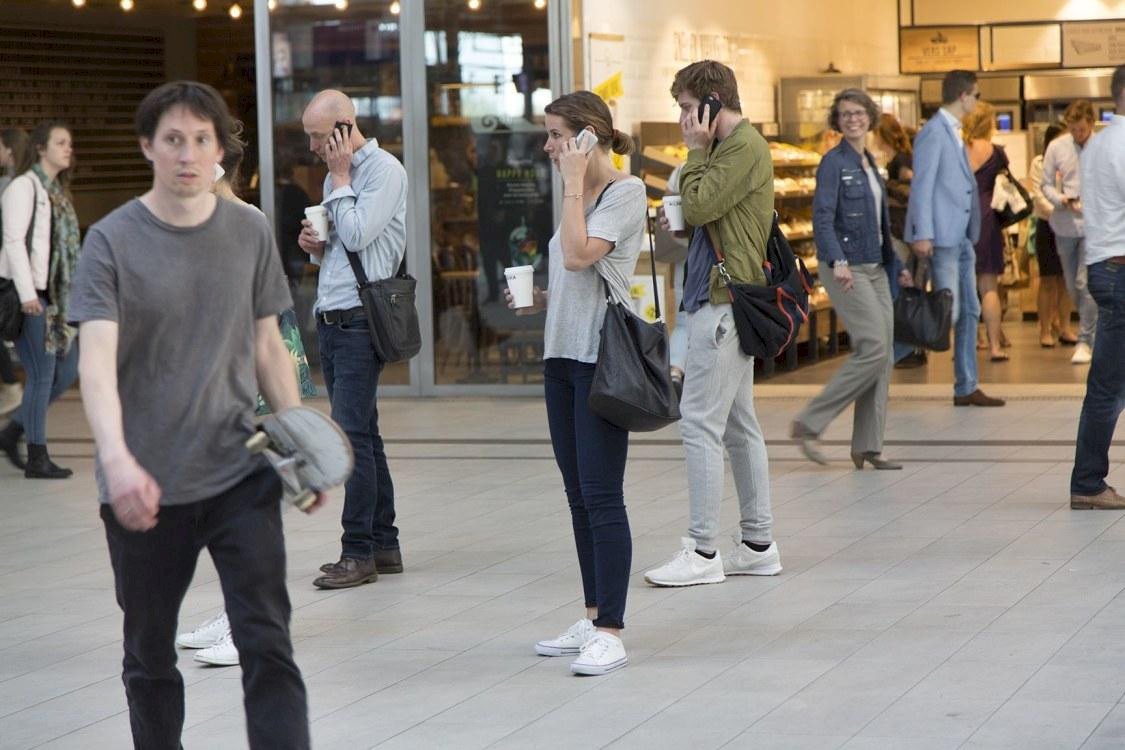

Sander Breure and Witte van Hulzen (b. Unknown)
How can we know the dancer from the dance?

In 2016, over a period of six months, Sander Breure and Witte van Hulzen worked on what would eventually become a 25-minute film, together with four actors. The title of the video, How can we know the dancer from the dance?, is aptly chosen and subtly refers to a staged performance with extras.
After extensive observational research regarding human behaviour at the train station area in Utrecht known as Hoog Catharijne, they created a choreography of frequently occurring behaviours. Examples include repetitive walks, turning around repeatedly, wandering around with one’s hands in one’s pocket, looking up at the information board, showing people the way, bouncing on one leg out of boredom, etc.
The choreography is written to be performed by four people at a time and the prescribed movements are to be performed synchronously. To the artists, it was of vital importance that the weekly “performances” were not announced through the train station’s intercom, as it would cause the performance to become too theatre-like. Body language tells you a lot; it provides or gives away information about a person’s state of mind. It is a fascinating subject of study and the viewer of the video soon recognises (arche)typical movements.
It wasn’t long before the first videos taken by passers-by started to appear on the net in the form of snapshots and short films on websites such as Facebook and YouTube. Breure and Van Hulzen extensively searched the web for these amateur videos and then edited these in a more or less correct, chronological order into their final film How can we know the dancer from the dance? By opting for editing the amateur videos as opposed to a professional registration of the performance, the artists again involved the audience in the work of art, as we see the actors perform their steps through the eyes of the spectators who were there at the time.
A relatively large amount of copies were made of the video, as the artists intended to keep the price low so that these would be affordable also for the people who (without even knowing it) contributed to it. The packaging of the video – produced at the Rijksakademie (State Academy of Fine Arts) where both artists resided at the time – is a work of art in itself. All of the movements have also been depicted inside the box. They can be read from a diagram, which is also how the two artists wrote the instructions for their actors at the time.